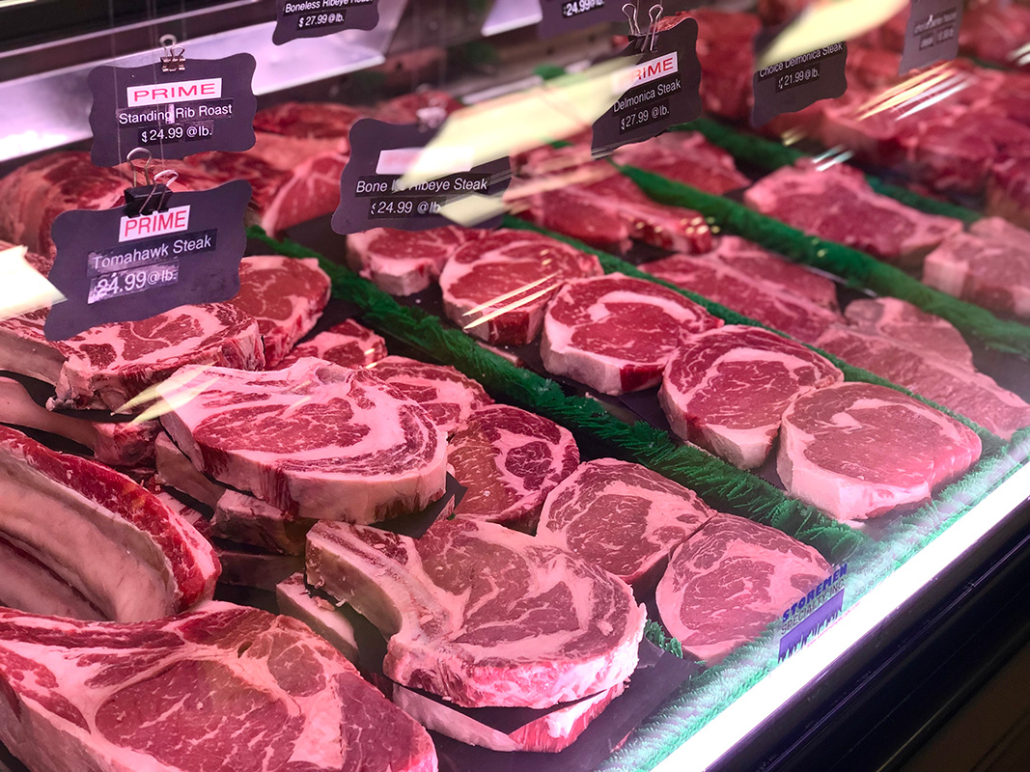Check Out Bagley Farms Meat Market Edwardsville IL for Farm-Fresh Meat and Specialized Cuts
Check Out Bagley Farms Meat Market Edwardsville IL for Farm-Fresh Meat and Specialized Cuts
Blog Article
Discover the Finest Selection of Cuts From Local Meat Market
In a period where the origins of our food are much more significant than ever, exploring the finest selection of cuts from your regional meat market uses an engaging narrative of high quality and stability. These markets not just assure exceptional quality and taste but also offer insights into the subtleties of various primitive and sub-primal cuts. As we reveal the advantages of reduced supply chains and seasonal options, there lies a deeper tale concerning sustaining lasting practices and enriching your cooking arsenal. What keys do these regional purveyors hold that could change your following dish into a premium experience?
Advantages of Regional Meat Markets
Neighborhood meat markets supply many benefits that are becoming increasingly substantial in today's food landscape. Because the supply chain is shorter, regional meat does not sustain prolonged transport times, protecting its freshness and dietary worth.
Additionally, local meat markets often sustain sustainable farming techniques. Numerous regional manufacturers take part in eco-friendly and moral farming methods, which add to the health of pets and the preservation of natural deposits. By choosing to buy from these markets, customers can play a function in advertising lasting farming and decreasing their carbon impact.
In addition, local meat markets add to the economic vitality of neighborhoods. By sustaining neighborhood producers, customers help sustain small companies and foster economic development within their area. This economic assistance can result in work creation and assistance preserve the one-of-a-kind personality of local neighborhoods.
Comprehending Various Meat Cuts
A basic aspect of making informed investing in choices at local meat markets is understanding the various cuts of meat offered. Each cut uses special tastes, appearances, and cooking potentials, making it vital to recognize just how they vary. Primarily, meat is categorized right into primal, sub-primal, and retail cuts. Primal cuts are the bigger sections at first separated from the carcass, such as the loin, rib, and chuck. These are additional split right into sub-primal cuts, which eventually damage down into retail cuts, the familiar selections discovered at the market.
As an example, from the beef primal cut, the loin, one can obtain sub-primal cuts like tenderloin, leading to retail options such as filet mignon. The rib primal cut includes sub-primal ribs, generating retail options like ribeye steaks. Understanding these distinctions help in choosing cuts that align with cooking demands and personal choices
Additionally, cuts differ in inflammation and fat web content, influencing their excellent food preparation methods. Harder cuts like brisket advantage from slow cooking, why not try this out while tender cuts like sirloin are matched for grilling. By comprehending these nuances, customers can enhance their culinary experiences and optimize their meat purchases.

Specialist Tips for Choosing Meat
Choosing the ideal cut of meat needs not only knowledge of the numerous choices readily available yet additionally an eager understanding of high quality signs that experts use to make their choices. Emphasis should be placed on the shade of the meat. Vivid, abundant shades typically reflect quality, while boring or grayish tones may indicate aging or improper storage space. Next, consider marbling, the fine touches of fat within the muscle mass. A well-marbled cut typically guarantees enhanced taste and tenderness, as the fat thaws throughout cooking, improving the meat's structure and taste.
An additional important facet is the meat's structure. Expert advice likewise requires examining the product packaging, if applicable.

Lastly, comprehending the reputation and sourcing methods of your local meat copyright can offer insights right into the quality and moral standards of the meat. Engaging with educated butchers can offer valuable suggestions customized to details culinary demands, making sure a premium eating experience.
Best Seasonal Options

Picking seasonal cuts not just makes sure freshness but additionally lines up with the peak top quality of various meats. Pork, typically cured and protected in the chillier months, offers a rich selection of cuts like ham and bacon throughout winter season, when pigs are butchered after being fattened on fall harvests. Fowl, on the other hand, is commonly at its ideal throughout late springtime and very early summertime, when poultries have actually developed on a diet of fresh grains and greens.
Sustaining Lasting Practices
Welcoming lasting methods in meat production is important for promoting ecological wellness and ensuring the long life of regional environments. In the context of regional meat markets, sustainability click here to read involves a dedication to honest farming techniques, decreasing carbon footprints, and sustaining biodiversity. By prioritizing these practices, manufacturers not only enhance the top quality of their offerings however likewise add favorably to their communities and the earth.
Regional meat markets play a critical role in cultivating sustainable farming by sourcing items from farms that apply green techniques. These might include rotational grazing, organic feed, and incorporated pest monitoring, which collectively reduce ecological impact and advertise animal welfare. By selecting to sustain such markets, consumers can straight influence the need for sustainably increased meat, urging more manufacturers to adopt these techniques.
Additionally, lasting techniques in meat manufacturing can significantly reduce the market's environmental footprint. Supporting sustainable practices not only benefits the environment but also aligns with a broader dedication to liable intake and manufacturing.
Verdict
Neighborhood meat markets use unparalleled advantages in terms of top quality, quality, and sustainability. By supplying a diverse series of primal and sub-primal cuts, these markets accommodate diverse cooking choices while making sure transparency in sourcing. Seasonal selections, such as springtime lamb and fall beef, improve the cooking experience with unique tastes and inflammation. Sustaining regional meat markets not only advertises sustainable farming practices yet additionally adds to a more informed and rewarding culinary trip.
Report this page